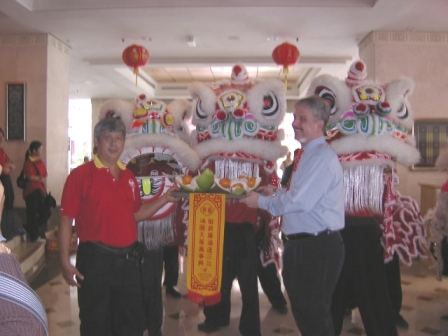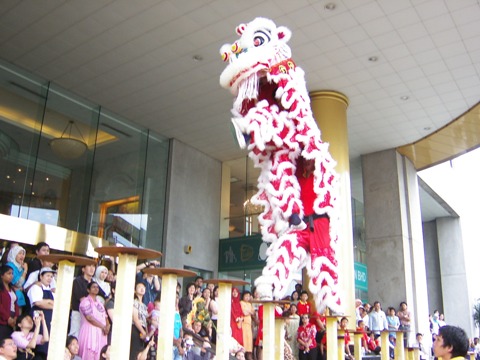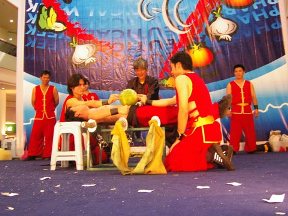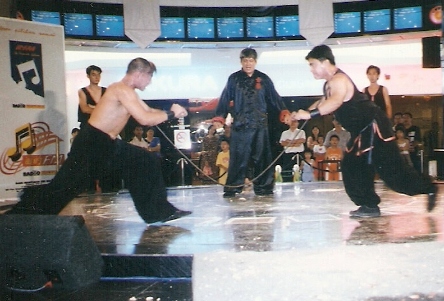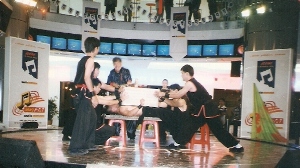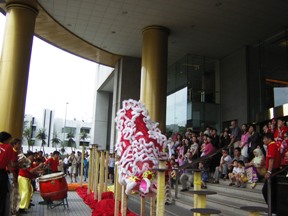| Lion Dance Performance | |||
|
|||
|
The lion is enacted by two dancers. One handles the head, made out of strong but light materials like paper-mache and bamboo, the other plays the body and the tail under a cloth that is attached to the head. The 'animal' is accompanied by three musicians, playing a large drum, cymbals and a gong. A Little Buddha teases it with a fan or a giant ball. The head dancer can move the lion's eyes, mouth and ears for expression of moods. |
|||
| Lion Dance with Acrobatic Performance | |||
|
|||
|
This dance has evolved from an old folk dance in China. Thanks to the adaptation of the acrobats, it has become a very popular number with the audience. |
|||
| Martial Arts | |||
|
|||
|
Martial arts or Wushu, have been created and developed for self-defense and survival throughout human history. Correct Chinese Wushu training improves physical ability, health, and willpower; it gives an individual an excellent method of exercise, a personal art form, a competitive sport, and a basis for self-defense and sparring. Total martial training includes Ti (kicking), Da (punching), Shuai (throwing), Na (controlling), Gi (hitting), Ci (thrusting), etc. Related to each style are basic forms, or sequences, which may involve defense strategies, offense, retreat, mobility and immobility, speed and slowness, hard or soft postures, emptiness and fullness, with or without weapons.
Other training will include practical defense using that particular style, defense simulation such as two-man choreographed sequences for beginning contact training. There are also internal and external body training methods to strengthen the body to withstand strikes and blows. In the advanced stages of training, a student begins full-contact training by sparring with semi-control in order to add realism to the training.
Wushu (literally, "martial methods") was historically termed "Wu-Yi" or martial arts. Fairly recently, the Chinese government changed the term to "Guoshu," or "national method." The term most popular in North America is "Kung-fu," which actually means one's ability in any skill, not necessarily martial. |
|||
| Martial Arts with Drums Performance | |||
|
|||
|
The drum is used to accompany the Lion's or Dragon's movements during the dance. The base is made of wood with spring coils inside that gives the drum more emphasis. The top surface is made from preserved ox skin pinned to the sides and finished off with layered gloss. It is also usual for the drum to be decorated with a variety of design patterns. |
